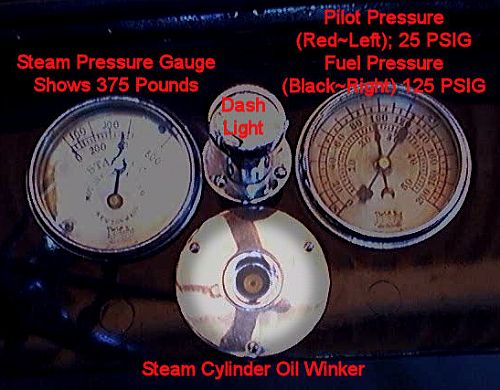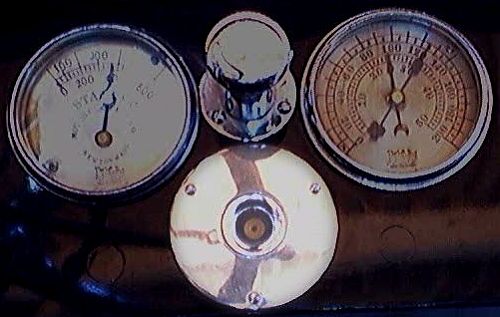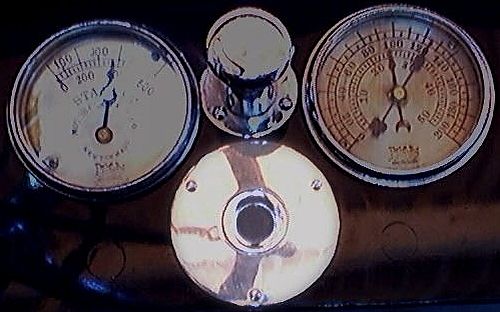|
With any engine where there are mechanical components in motion some form of lubrication is required. Without lubrication excessive wear would occur and the engine would soon be ruined. The piston sliding in the cylinder of a steam engine is no exception. For the internal combustion engine, only one side of the piston is used to generate power and thus the other side can be exposed to oil which is splashed onto the cylinder walls for lubrication purposes. Thus for the modern automobile, oil from the crankcase pan under the engine is pumped throughout the engine for lubrication, As the crankshaft rotates at high speeds (as compared to a steam engine crankshaft) the counterweights splash in the oil to sufficiently lubricate the cylinder walls for the piston to slide. The fact that a steam engine's piston is double-acting (uses both sides of the piston to generate power), another way to lubricate the piston as it slides in the cylinder is required. For steam engines lubrication can be added to the steam supply which will adequately lubricate the cylinder walls and piston. On the dash of all Stanley cars is a device called a "Winker". It is basically a sight glass installed in the oil supply line to the engine steam line that indicates when steam cylinder oil is flowing. A piston pump driven by the right rear axle of the car is employed to pump the steam cylinder oil from a reservoir to the steam line.
The photograph above shows the Steam Cylinder Oil Winker on the dash of a Stanley. Depending on the Stanley model the winker was mounted either on the firewall or the dash in easy view of the driver. The above photograph is a frame from the video. The steam pressure gauge (upper left) indicates 375 PSIG pressure in the boiler. The dual-needle fuel pressure gauge (upper right) displays 25 PSIG pressure (red pointer) on the pilot fuel tank and 125 PSIG pressure (black pointer) on the kerosene fuel system which fuels the burner.
As the throttle is opened and the car starts moving, the turning of the rear axle drives the pump rod which causes the steam cylinder oil pump to pump oil. With each stroke of the steam cylinder oil pump's plunger a couple drops of steam cylinder oil is pumped from the oil storage tank and into the oil line that feeds oil to the engine steam supply. The oil line is routed to the car's dash where the winker is installed before the line goes through the firewall and connects to the steam line. The winker's glass turns brown when oil flows and the returns to silver after the oil pump completes a stroke. Thus whenever the car is in motion the Winker's glass goes from sliver to brown to silver to brown. The design of the winker is such that it resembles an eye (silver area is the iris with the center hole representing the pupil) and with the oil flowing in pulses the Winker turning brown mimics someone winking their eye or closing their eyelid over the eye and then opening it again.
The photograph above shows the winker glass brown during the time the steam cylinder oil pump is pumping oil. In a few moments, as the pump reaches the end of its stroke, the steam cylinder oil will flow from the winker and it will again appear as in the previous photo. Additional information regarding the winker can be found in the technical section of this website. Please click on the hyperlinks below to view a piping drawing of a Model 735 Stanley and to learn more about the various components of the steam cylinder oil system. In the video the rear axle of the car is supported on a pair of jack stands so that both rear wheels are free to turn. Due to the operation of the differential the left wheel has been chocked to keep it from rotating so that only the right wheel rotates. To view video, click the START button (lower left triangle). The video will start and run to conclusion. The video lasts one minute, forty-five seconds and is over 12 megs in size. It will take a few minutes to download. The video starts with the engine running slowly and the winker blinking slowly. After a few minutes the throttle is opened slightly (you'll see the throttle's reflection as it is moved in the silver ring that surrounds the winker) and you'll note the winking rate will increase since the engine is running faster and steam cylinder oil is being pumped faster. The throttle will then me opened more to increase the engine's speed even more and you'll note the winker blinks at a rapid rate. Finally the throttle is closed and as the engine comes to a stop the winker stops blinking. |


